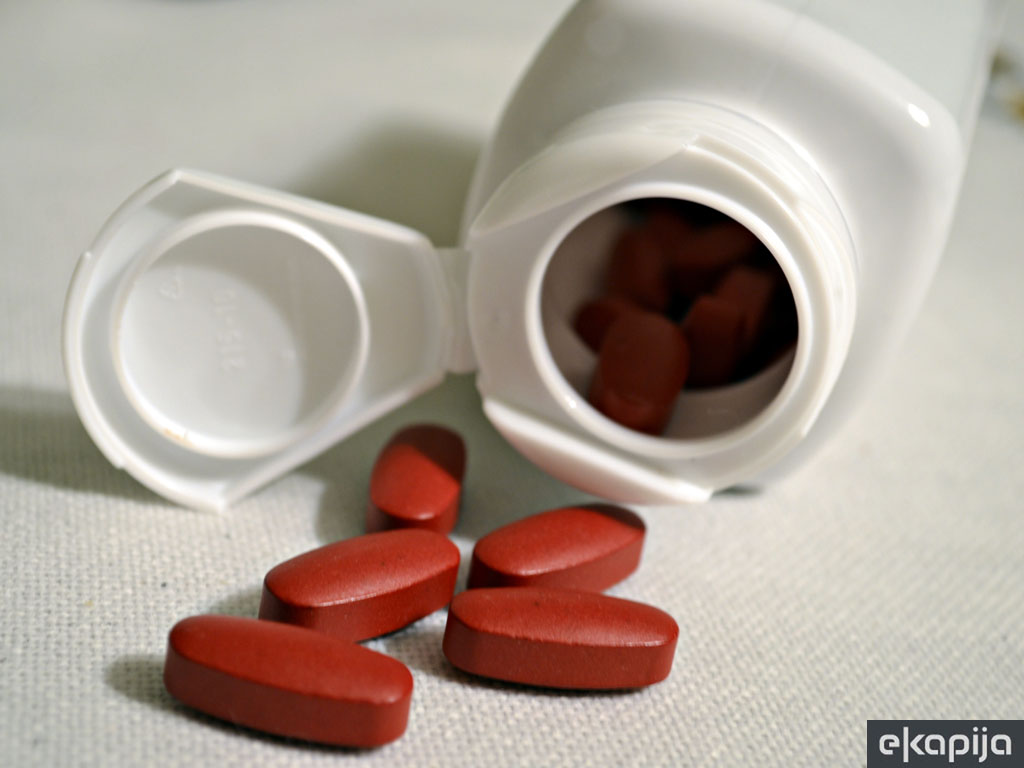Food, energy source and medicine – Electricity production from sunroot soon in Veliko Gradiste, good potential for export of tubers to Europe as well
A biomass power plant should soon be raised in the the area of Veliko Gradiste which will use sunroot as its energy source. As eKapija learns, a Belgrade-based company has rented 150 hectares in the village of Pozezeno for a 30-year period for the cultivation of this root vegetable.
– The tender for this land had been called with a purpose. The agreement was reached in late September, following several months of negotiations – says Dragan Milic, president of the municipality of Veliko Gradiste, for our portal.
Even though at this point he doesn't yet wish to divulge the name of the investor, who is, as they say, in the process of soliciting funds in Veliko Gradiste, our interviewee says that the investment is considerable – EUR 3-4 million – and that around twenty workers should be employed.
Sunroot is a perennial plant grown for both its tubers, used as food and in the pharmaceutical industry (it contain inulin, a probiotic which benefits intestinal flora, improves the immunity, helps in losing weight etc.), and its above ground part (used as animal feed, biomass, energy source for heating etc.). The stem can reach the height of at 2 to 3 meters, and its yellow petals resemble that of a sunflower. There are successful growers of sunroots in Serbia, but the vegetable is still not widely known. As well, the Veliko Gradiste project is worthy of attention due to the fact that the production of electricity from this plant is still relatively unknown in Serbia, as confirmed to us by several consultants for the utilization of biomass.
(Prof. Miladin Sevarlic next to a sunroot plantation) Professor Miladin Sevarlic, agroeconomist, says for eKapija that this multipurpose plant is very interesting for investments. Sunroot has great energy potential, and its utilization in the production of electricity is much more profitable than the utilization of crop residue. Professor Sevarlic emphasizes that, under favorable climate conditions and with irrigation, sunroot produces biomass several times greater than corn does on an identical area.
– Once sunroot is sown, it can be exploited, under optimal cultivation conditions, for up to 25 years, which reduces the amount of investments needed. If the stem is used, tubers need to be extracted each year in order to thin the plantation – Professor Sevarlic says.
Studies show that stems and leaves can produce biomass of more than 120 tons per hectare. Under identical conditions, corn produces half as much. It's clear why sunroot, which has a slightly lower methane power than corn, is much more profitable.
Thanks to its quick growth, it casts a shadow between the lanes and prevents the appearance of weeds. It can also thrive in types of soil not appropriate for other plants, which means it can be grown all over Serbia, especially since it doesn't require special agro-technical measures. According to experts, it is practically indestructible. Once sown, it can be maintained and regenerated permanently. Biologically, it is very healthy and tolerant to pests and pathogens and doesn't need chemical protection, which enables its use in the pharmaceutical industry and health food production.
Regarding potentials of utilization and possible profit thereof, eKapija talked to an agricultural engineer who cultivates sunroot on several hectares in central Serbia. He started 4 years ago, with the intention of using the above-ground part of the plant as silage, i.e. sheep food in wintertime, and later he got other ideas as well, namely, the possibility of exporting its tubers. The list of sunroot-derived products is long and varied, which leads to great demand for this culture in the European Union.
– Sunroot is predominantly used to produce inulin, which is used in the pharmaceutical industry, but also in the food industry. There's no market for it here, because it's not being processed, which is why the plans are related to export – says our interviewee and points out that it is important to find a good place to export to.
– The tender for this land had been called with a purpose. The agreement was reached in late September, following several months of negotiations – says Dragan Milic, president of the municipality of Veliko Gradiste, for our portal.
Even though at this point he doesn't yet wish to divulge the name of the investor, who is, as they say, in the process of soliciting funds in Veliko Gradiste, our interviewee says that the investment is considerable – EUR 3-4 million – and that around twenty workers should be employed.
Sunroot is a perennial plant grown for both its tubers, used as food and in the pharmaceutical industry (it contain inulin, a probiotic which benefits intestinal flora, improves the immunity, helps in losing weight etc.), and its above ground part (used as animal feed, biomass, energy source for heating etc.). The stem can reach the height of at 2 to 3 meters, and its yellow petals resemble that of a sunflower. There are successful growers of sunroots in Serbia, but the vegetable is still not widely known. As well, the Veliko Gradiste project is worthy of attention due to the fact that the production of electricity from this plant is still relatively unknown in Serbia, as confirmed to us by several consultants for the utilization of biomass.
(Prof. Miladin Sevarlic next to a sunroot plantation) Professor Miladin Sevarlic, agroeconomist, says for eKapija that this multipurpose plant is very interesting for investments. Sunroot has great energy potential, and its utilization in the production of electricity is much more profitable than the utilization of crop residue. Professor Sevarlic emphasizes that, under favorable climate conditions and with irrigation, sunroot produces biomass several times greater than corn does on an identical area.
– Once sunroot is sown, it can be exploited, under optimal cultivation conditions, for up to 25 years, which reduces the amount of investments needed. If the stem is used, tubers need to be extracted each year in order to thin the plantation – Professor Sevarlic says.
Studies show that stems and leaves can produce biomass of more than 120 tons per hectare. Under identical conditions, corn produces half as much. It's clear why sunroot, which has a slightly lower methane power than corn, is much more profitable.
Thanks to its quick growth, it casts a shadow between the lanes and prevents the appearance of weeds. It can also thrive in types of soil not appropriate for other plants, which means it can be grown all over Serbia, especially since it doesn't require special agro-technical measures. According to experts, it is practically indestructible. Once sown, it can be maintained and regenerated permanently. Biologically, it is very healthy and tolerant to pests and pathogens and doesn't need chemical protection, which enables its use in the pharmaceutical industry and health food production.
Regarding potentials of utilization and possible profit thereof, eKapija talked to an agricultural engineer who cultivates sunroot on several hectares in central Serbia. He started 4 years ago, with the intention of using the above-ground part of the plant as silage, i.e. sheep food in wintertime, and later he got other ideas as well, namely, the possibility of exporting its tubers. The list of sunroot-derived products is long and varied, which leads to great demand for this culture in the European Union.
– Sunroot is predominantly used to produce inulin, which is used in the pharmaceutical industry, but also in the food industry. There's no market for it here, because it's not being processed, which is why the plans are related to export – says our interviewee and points out that it is important to find a good place to export to.
– It is used to a large extent in Germany and France, where a brandy is made of it, reaching the price of EUR 15-20 per liter. Also, the French pharmaceutical industry uses sunroot in producing supplements, probiotics...
Our interviewee says that he is in contact with several other producers and that there is potential for the export of around 1,000 tons from Serbia a year. It is expected that, with a secure export, the interest in producing sunroot would be much bigger and that we would be able to offer immeasurably larger quantities in two years. The wholesale purchase price is, for example, around 30 euro cents , but it can also vary depending on the quantity, the quality etc. Sunroot is highly non-specific and can be grown throughout Serbia, which works in our favor.
The data by the Institute of Field and Vegetable Crops of Novi Sad show that yields vary to a great extent, and that the average yield is 38 tons per hectare.
Although sunroot is not too demanding, potential producers need to know that they mustn't venture into this type of endeavor thinking that no investments are needed, as the yields correspond to the investments. If the production of biomass is the goal, the area needs to be estimated very precisely, as well as natural conditions and necessary agro-technical measures. If all this is taken into consideration, yields can be impressive, our interviewee believes.
Conditions
Sunroot is best sown from late February till mid-April. Irrigation is needed in case of drought in the budding stage and in regeneration following the reaping if used as animal feed, as per data by the Institute. There is no need to protect the plants. As the vegetable has a deep root system, it can use nutritious matters from the deeper layers of the soil. However, higher yields require fertilization. Harvesting is performed by combines (for green mass) or an adapted potato excavator (for tubers).
Sunroot-derived products
– sunroot flour (with a high inuline content)
– sunroot crisps (dehydrated and chopped tubers as dried vegetables and health food)
– pickled or pasteurized sunroots
– high concentration inulin
– fructose syrup (sugar syrup with a high fructose content)
– ethanol
– industrial alcohol
– brandy
– heating fuel (4-0-60 tons per hectare from the above-ground part of the plant)
– stems and leaves as biomass
– insulation and chipboard materials from dried sunroots
M.M.
Our interviewee says that he is in contact with several other producers and that there is potential for the export of around 1,000 tons from Serbia a year. It is expected that, with a secure export, the interest in producing sunroot would be much bigger and that we would be able to offer immeasurably larger quantities in two years. The wholesale purchase price is, for example, around 30 euro cents , but it can also vary depending on the quantity, the quality etc. Sunroot is highly non-specific and can be grown throughout Serbia, which works in our favor.
The data by the Institute of Field and Vegetable Crops of Novi Sad show that yields vary to a great extent, and that the average yield is 38 tons per hectare.
Although sunroot is not too demanding, potential producers need to know that they mustn't venture into this type of endeavor thinking that no investments are needed, as the yields correspond to the investments. If the production of biomass is the goal, the area needs to be estimated very precisely, as well as natural conditions and necessary agro-technical measures. If all this is taken into consideration, yields can be impressive, our interviewee believes.
Conditions
Sunroot is best sown from late February till mid-April. Irrigation is needed in case of drought in the budding stage and in regeneration following the reaping if used as animal feed, as per data by the Institute. There is no need to protect the plants. As the vegetable has a deep root system, it can use nutritious matters from the deeper layers of the soil. However, higher yields require fertilization. Harvesting is performed by combines (for green mass) or an adapted potato excavator (for tubers).
Sunroot-derived products
– sunroot flour (with a high inuline content)
– sunroot crisps (dehydrated and chopped tubers as dried vegetables and health food)
– pickled or pasteurized sunroots
– high concentration inulin
– fructose syrup (sugar syrup with a high fructose content)
– ethanol
– industrial alcohol
– brandy
– heating fuel (4-0-60 tons per hectare from the above-ground part of the plant)
– stems and leaves as biomass
– insulation and chipboard materials from dried sunroots
M.M.
Companies:
Opština Veliko Gradište
NS SEME Institut za ratarstvo i povrtarstvo Novi Sad
Tags:
Share:






Only logged-in users can comment.


 Izdanje Srbija
Izdanje Srbija Serbische Ausgabe
Serbische Ausgabe Izdanje BiH
Izdanje BiH Izdanje Crna Gora
Izdanje Crna Gora


 News
News









 LinkedIn
LinkedIn Copy link
Copy link


